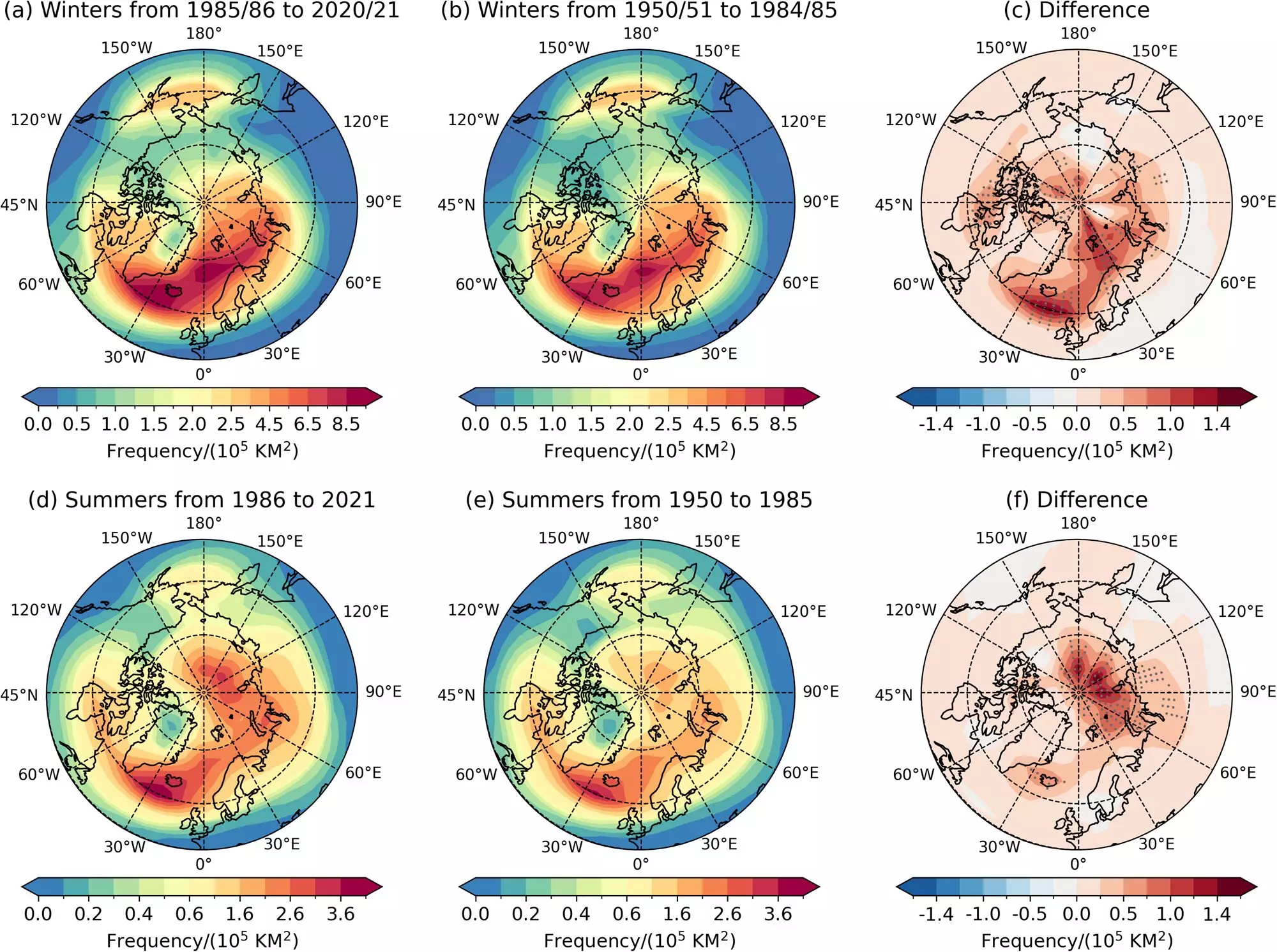A recent study conducted by a team of Earth scientists highlights the alarming trend of increasing cyclones in the Arctic region. The researchers from North Carolina State University, the University of Alaska Fairbanks, North Carolina A&T State University, and Sandia National Laboratories have found evidence suggesting that not only have cyclones become more frequent in the past fifty years, but they have also grown stronger. This study contributes to our understanding of the impact of climate change on extreme weather events in the Arctic.
The Arctic region is experiencing rapid temperature rise, outpacing any other region on Earth. This phenomenon has caused significant changes in the Arctic ecosystem, including delayed ice formation and earlier melting each year. Some scientists even predict that ice-free summers may occur by the end of this decade. These changes led the research team to investigate the prevalence and characteristics of cyclones in the Arctic.
Last year, the Arctic region experienced the strongest cyclone ever recorded, with wind speeds reaching up to 67mph. This cyclone generated massive waves that contributed to the breakup of winter ice. To determine if such cyclones are becoming more common, the research team analyzed extensive climate data dating back to the 1950s. By comparing cyclone occurrences over the past seventy years, the researchers discovered a clear pattern of increasing frequency, intensity, and duration of cyclones in the Arctic.
The study establishes a direct correlation between rising temperatures and cyclone formation in the Arctic. As temperatures continue to climb, there is a greater likelihood of cyclones forming. Additionally, changes in temperature gradients contribute to the size and strength of cyclones. Notably, alterations in the jet stream are closely linked to the increase in Arctic cyclones, particularly during winter. Furthermore, stronger polar air vortexes in the troposphere are resulting in more frequent cyclones during the summer months.
The consequences of this rising trend of cyclones in the Arctic are multifaceted. The increased size and frequency of cyclones lead to more extensive sea ice breakage. As more ice breaks up, the process of climate change is hastened in the region. The amplification of cyclones not only contributes to the overall warming of the Arctic but also impacts the unique ecosystems and wildlife that depend on stable ice conditions.
The study’s findings shed light on the concerning escalation of cyclones in the Arctic over the past few decades. The relationship between rising temperatures and cyclone formation poses significant challenges for the delicate Arctic ecosystem and emphasizes the urgent need for comprehensive efforts to mitigate climate change. Awareness of this growing threat is crucial in addressing the long-term impacts and developing strategies to mitigate the consequences on both the Arctic environment and global climate systems.


Leave a Reply